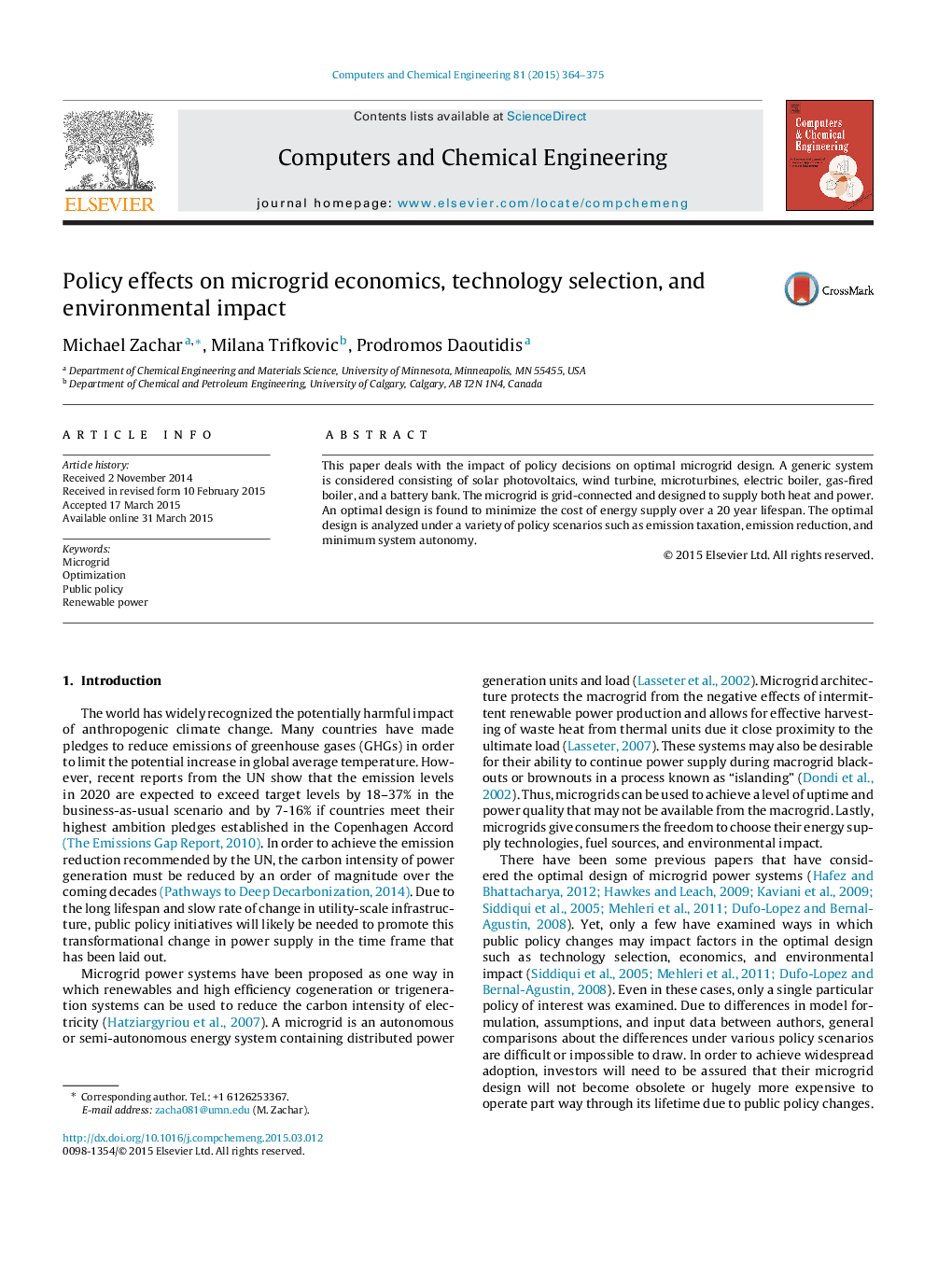| Article ID | Journal | Published Year | Pages | File Type |
|---|---|---|---|---|
| 172252 | Computers & Chemical Engineering | 2015 | 12 Pages |
•Mixed integer linear program used to assess public policy effects on microgrid design.•Emission taxation and mild incentives seen to have little impact on optimal design.•Strong economic incentives encouraged renewables usage and emission reduction.•Local fuel-fired cogeneration used to reduce emissions by 5–15%.•Renewable power used to achieve high levels of emission reduction, but more costly.
This paper deals with the impact of policy decisions on optimal microgrid design. A generic system is considered consisting of solar photovoltaics, wind turbine, microturbines, electric boiler, gas-fired boiler, and a battery bank. The microgrid is grid-connected and designed to supply both heat and power. An optimal design is found to minimize the cost of energy supply over a 20 year lifespan. The optimal design is analyzed under a variety of policy scenarios such as emission taxation, emission reduction, and minimum system autonomy.
